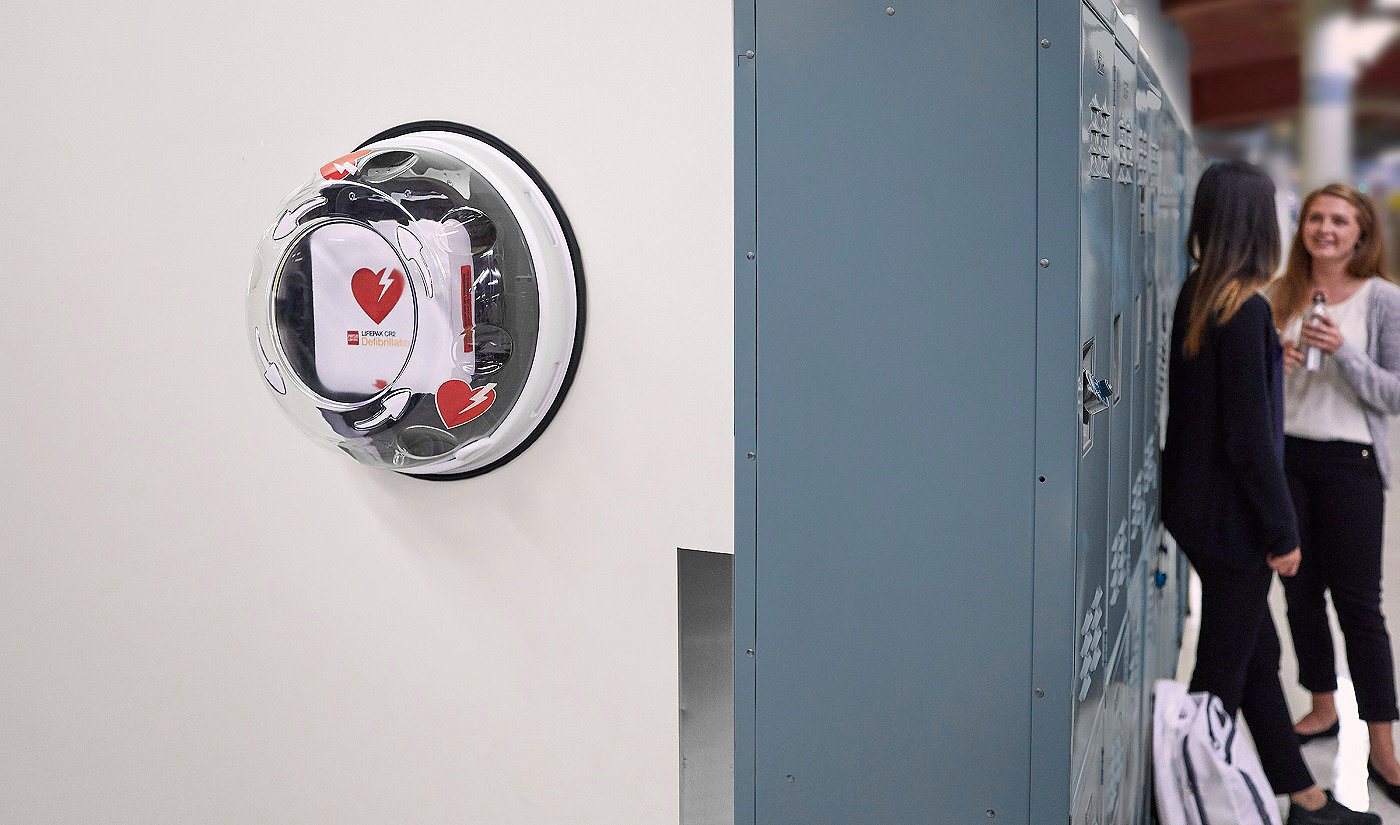22-Apr-2024
AED buying guide

5-minute read
Top 5 considerations for your next AED purchase
Whether you’re a school principal, safety official or serve in the hospitality industry, adding an automated external defibrillator (AED) is an easy, essential and often overlooked step for your work safety program.
Approximately 350,000 cases of sudden cardiac arrest (SCA) occur outside of the hospital each year in the United States.1 AEDs are lightweight, portable devices designed to help save people experiencing SCA in public and can be used on children, teens and adults. Even minimally trained bystanders can easily operate them by following audible and visual instructions during an emergency.
But not all AEDs are equal— defibrillators come in different shapes, sizes and capabilities. How can you make sure to purchase the right device for your workplace?
5 standards to follow when purchasing an AED
An effective AED program is a critical link in the chain of survival, empowering you to deliver lifesaving intervention even before emergency services arrive.
Stryker offers diverse options to help you choose the right defibrillator for your employees and customers. When purchasing AEDs for your organization, consider these features:
1. Ease of use
When selecting an AED, it is crucial to opt for a model equipped with user-friendly features that streamline the emergency response process. The ideal AED should incorporate straightforward graphics and clear, audible instructions, allowing rescuers of all skill levels to operate the device with confidence.
Automated features can significantly reduce the burden on the user, ensuring that attention remains on the critical task at hand. These features might include automated pad detection, shock delivery, and rhythm analysis, minimizing the need for manual intervention.
Visual prompts, such as step-by-step diagrams or flashing lights, coupled with voice prompts that deliver concise guidance, are essential. They help guide rescuers through each stage of the cardiopulmonary resuscitation (CPR) procedure, from pad placement to compression rhythm, and ultimately to shock administration if necessary. The combination of these intelligent design elements in an AED can make a profound difference, empowering ordinary individuals to provide life-saving assistance during a cardiac emergency with greater precision and calm.
2. Readiness
In today's fast-paced world, where every second counts in an emergency, the readiness of life-saving devices such as AEDs should not be left to chance. Imagine searching for an AED during a sudden cardiac arrest response only to discover it’s not in its designated spot or the battery of the available AED is depleted. This is a serious concern that can hinder the timely delivery of aid to a person in cardiac arrest.
To combat these issues, innovative AEDs that connect to Wi-Fi® have been introduced to the market. These smart devices are a game-changer, offering the ability to configure automatic alerts that notify you of any factors that may compromise their readiness. Whether it's a low battery, a missing component, or improper storage, Wi-Fi enabled AEDs help ensure that maintenance and oversight are proactive rather than reactive, bolstering the reliability and effectiveness of emergency response protocols when it matters most.
3. Connectivity and technology
Integrated Wi-Fi connectivity can give emergency responders a detailed view into each cardiac arrest event. So even before they arrive, emergency professionals can review details of the shocks given, see the patient’s ECG and more.
Stryker’s LIFEPAK CR2 defibrillator is the first and only AED that allows chest compressions during ECG rhythm analysis, reducing pauses between CPR and defibrillation using cprINSIGHT analysis technology. Once CPR begins, the device automatically analyzes and detects if a shock is needed. This significantly reduces pauses in chest compressions, even eliminating pauses if the rhythm is determined to be non-shockable.
4. Affordability
When evaluating AED costs, it is critical to go beyond the upfront purchase price and carefully consider the full spectrum of expenses that will accrue over the lifespan of the device. This includes not only the long-term maintenance costs but also the frequency and financial burden of replacing accessories whose functional lifespans are limited. These accessories, while seemingly ancillary, represent an outlay that can significantly affect the total cost of ownership.
A comprehensive evaluation of AED costs should involve a careful analysis of both long-term maintenance expenses and the frequency and cost associated with replacing accessories, to ensure fiscal preparedness and uninterrupted readiness.
5. Size and durability
Most public spaces need a device with a smaller footprint that accommodates limited space in an office, plane or vehicle. Look for AEDs that boast a small footprint without compromising functionality. It’s wise to select AEDs that, despite their compact form, do not sacrifice on functionality. Features such as clear voice prompts, straightforward operation and maintenance alerts are important details that can help bystanders deliver potentially life-saving aid.
Durability and resilience are also key factors to consider for an AED that may be exposed to challenging conditions. An IP56 rating is a testament to the robustness of an AED, signifying the highest level of industry-approved protection against ingress of dust particles and water. This rating ensures the device is well-equipped to withstand harsh environments and is ready for use when emergencies arise.
By selecting an AED that is both compact and carries an IP56 rating, organizations can effectively prepare for life-threatening situations in almost any setting.
Together, we save lives.
When one of your customers or employees collapses from sudden cardiac arrest, time is of the essence. Reducing response time by even one or two minutes from collapse to AED shock can mean the difference between death and survival.
Help keep your workplace safe with Stryker’s full line of AEDs. With the right solution for all public places, we can help improve cardiac arrest survival rates in your community.
Connect with an AED expert today to learn more about your device options and how they can help your organization.
1. Benjamin EJ, Virani SS, Callaway CW, Chamberlain AM, Chang AR, Cheng S, et al. Heart disease and stroke statistics—2018 update: a report from the American Heart Association. Circulation. 2018;137(12): e67-e492.
EC-GSNPS-SYK-1057300_REV-0_en_us
